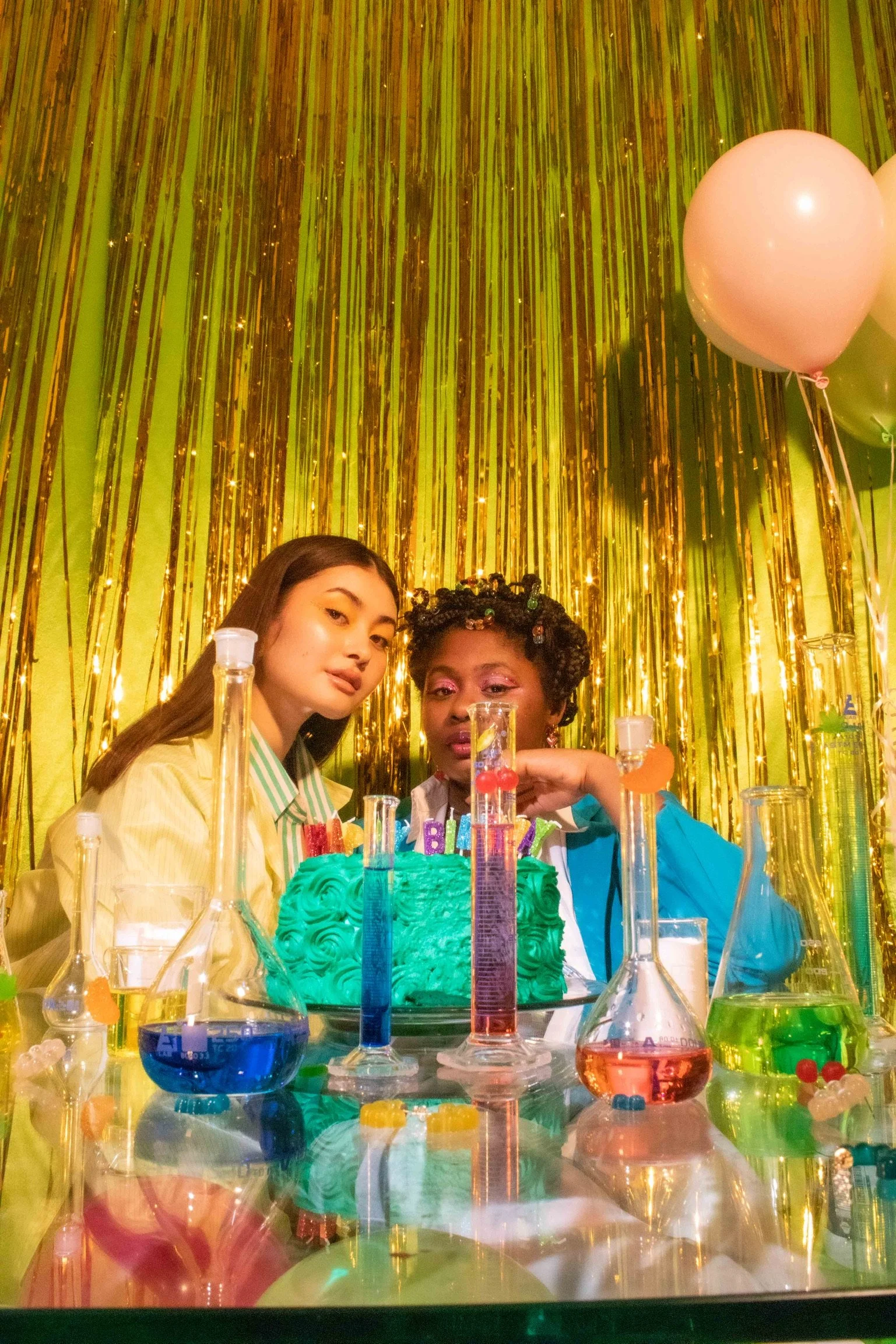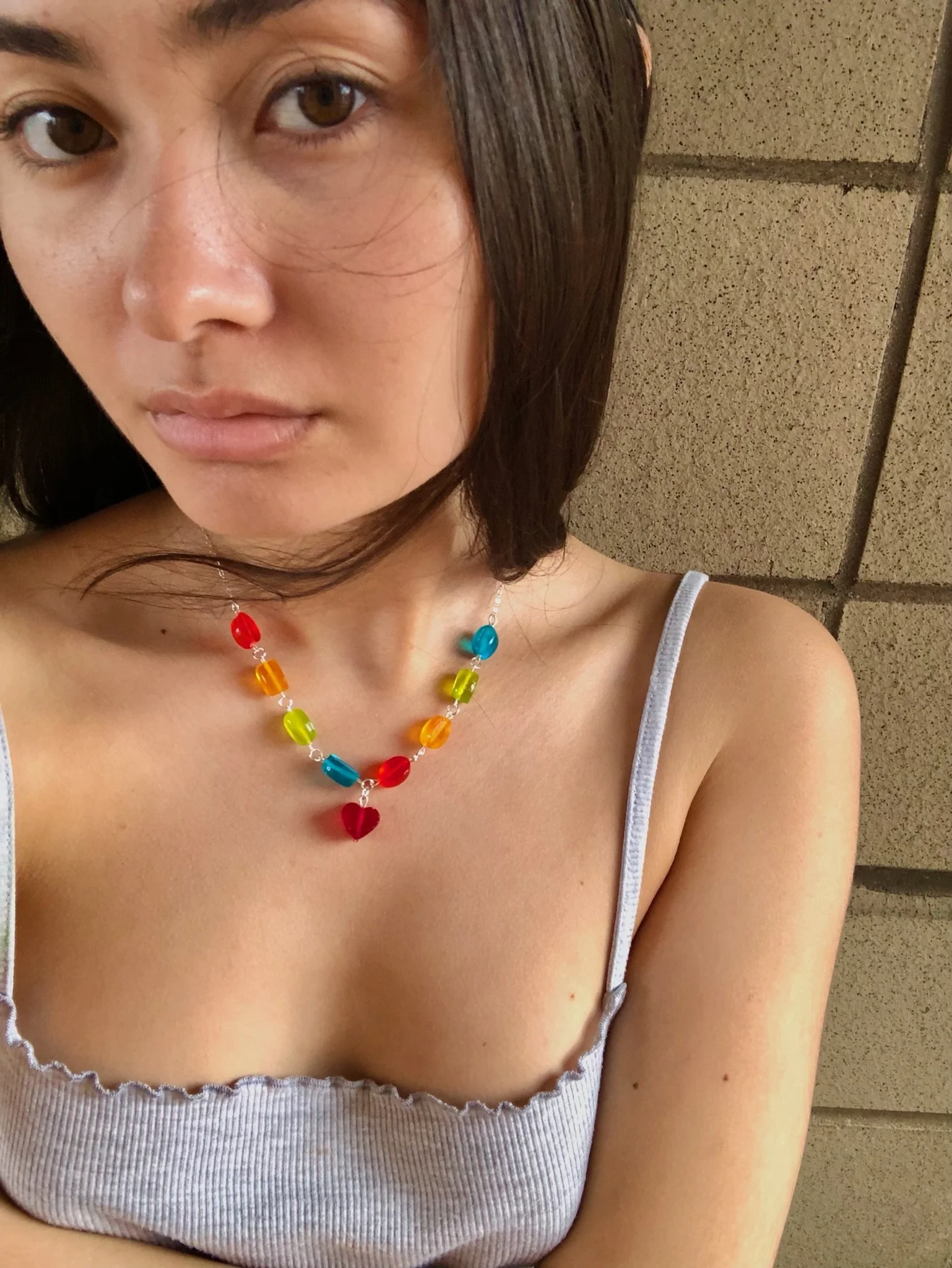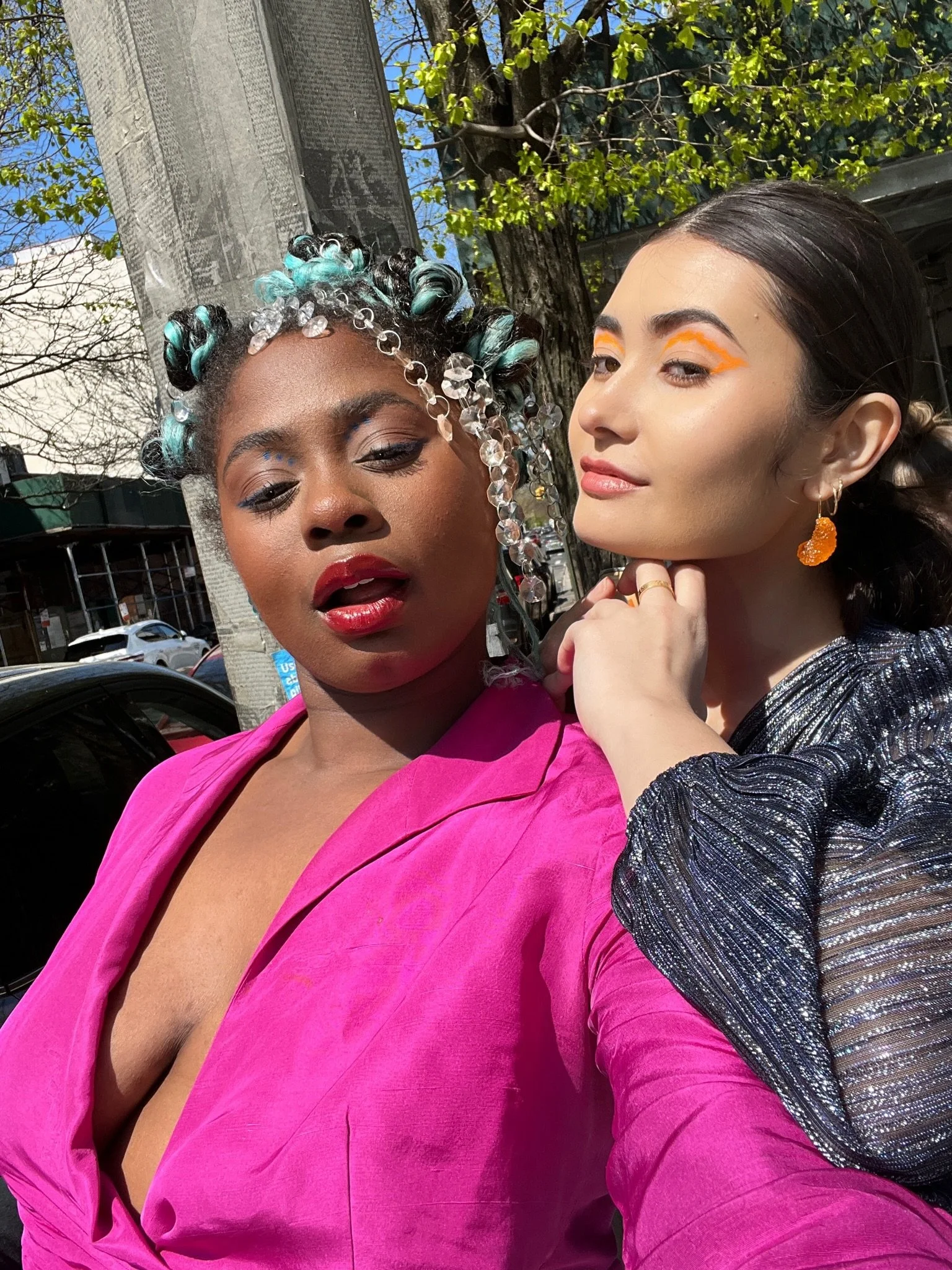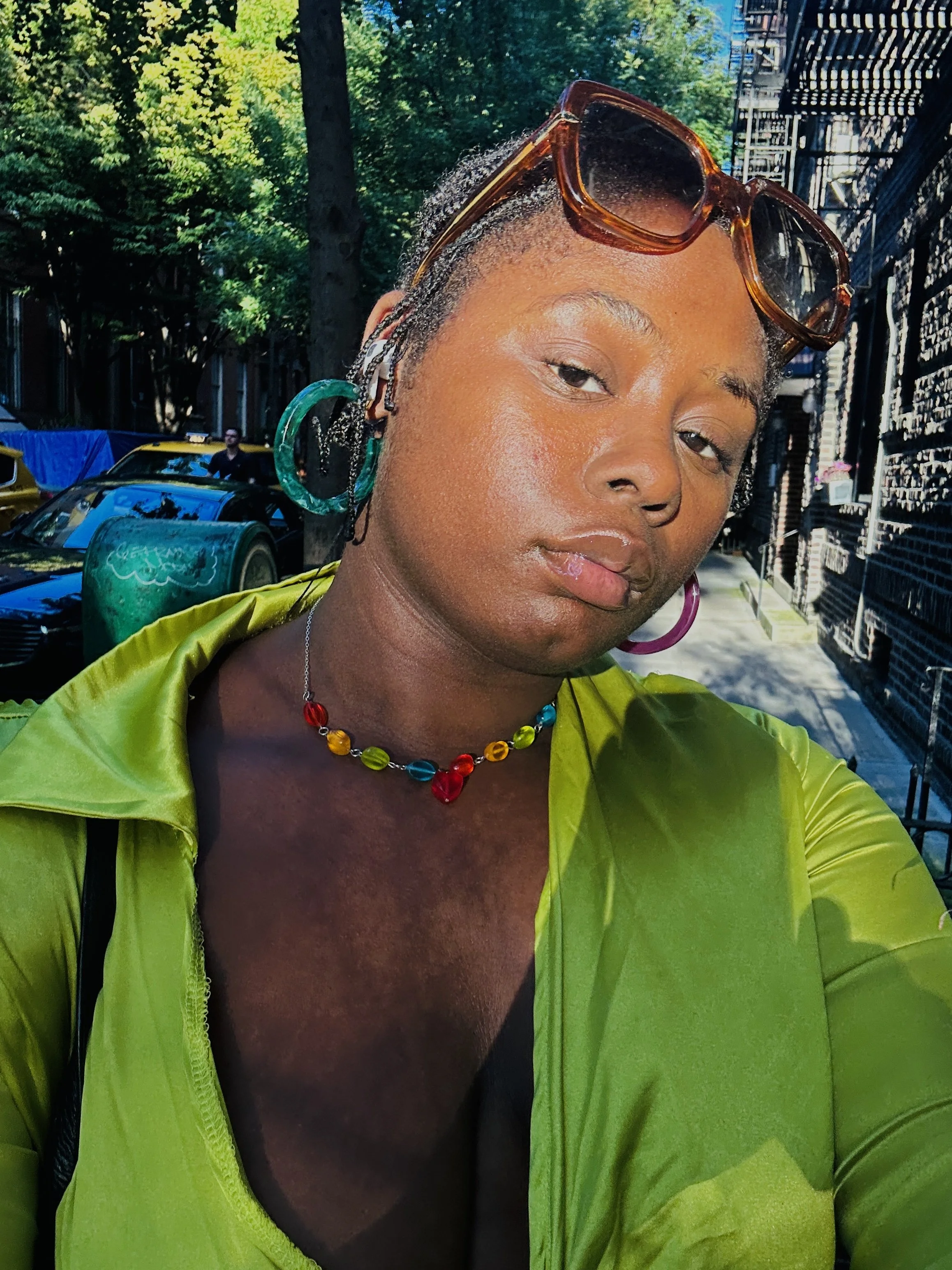Meet the Gems Pioneering Bioplastic Jewelry
Accessorizing has been made more joyful and much more sustainable with the fun allure of Mo.Na. Gems. By blending art and science, the founders, Mecca McDonald and Mia Dunn were able to create a formula for bioplastic that makes these unique pieces both spunky and sustainable.
Check out this interview to learn more:
When and why did you start Mo.Na. Gems?
Image via Mo.Na. Gems
We are one of the first artists to create a bioplastic material to design "sustainable" accessories that aren't made from wood, seashells, cotton, etc.
We created Mo.Na., whose name is short for Mother Nature, and modeled after the periodic table due to our love of science. Mo.Na. is the cusp between design, art, and science.
The journey of Mo.Na. began the summer before our senior year (May 2020) at Johns Hopkins University. Mecca saw the resin-art trend (resin = plastic) take off on Tik Tok and immediately knew the harmful impact of this art trend.
I wondered if there was a more eco-friendly alternative to resin, and had the idea of creating a bioplastic that I could use to design fun and expressive accessories. So I partnered with another artist and designer, Mia Dunn, who happened to be studying Chemical Engineering, and got to work! Through our designs, MoNa challenges the narrative around what sustainability means, what it looks like, and how design can shape our physical and ecological future in imperative ways.
How do you both define sustainability?
Image via Mo.Na. Gems
Sustainability is beyond just following a trend. It’s about creating a world that incorporates living beings as the forefront of our culture. It’s about respecting plants and animals as much as we respect money, designer bags, expensive cars, etc. There is only one Earth …you can buy a new house, you can buy a new car, you can buy new clothes but you can’t buy a new Earth. So we have to do everything in our power to preserve our only home. Sustainability is about creating a world where we’re all thriving and striving together.
Have there been any ancestral influences in your designs?
A lot of our designs are influenced by both our heritages. Mecca is Jamaican-American and Mia is Japanese-American. The Jamaican influence can be seen in the vibrant colors inspired by fruit. The Japanese influence can be seen by the fun shapes and ornate designs.
Image via Mo.Na. Gems
There's a hesitation about clothing/accessories that aren't eternal- how do you think your brand subverts and changes thoughts on the permanence of commodities?
Image via Mo.Na. Gems
Mo.Na. is not the first sustainable accessory brand -- there are brands out there that use materials such as seashells, recycled metal scraps, and recycled plastic. What makes Mo.Na. Gems unique however, is that we are the first sustainable brand that uses biomaterials solutions to prove that sustainable fashion can be modern and trendy, without compromising aesthetics.
Our Gems are not single use. The product is 100% stable, durable, feels, and acts like regular plastic as long as you take care of it! The product is water resistant but we don't recommend exposing it to water for long periods of time.
In simple terms, our bioplastic is a modern plastic that acts just like regular plastic except when you throw it away it actually breaks down into organic matter, not microplastics. It becomes food for the soil and the Earth, instead of poisoning living beings and our water supply.
What were the greatest challenges you faced in growing your company, especially as WoC?
While we were researching our bioplastic formula at Johns Hopkins University, we had a scientific advisor who would give us feedback on our research. There was a point when we got stuck researching our starch-based bioplastic. Our advisor saw us struggling, ignored our prior research and suggested we scrap our research and try using pasta as a material instead. We were trying to develop a product that had similar mechanical properties to traditional plastic, clean cut, easy to mold, yet 100% biodegradable. Bioplastic exists but a lot of those plastics aren’t actually biodegradable and still pollute the earth in their production process, so we thought our research was important. The experience with our advisor was really frustrating, because we felt like he didn’t take us seriously, and that if we were white men our problems would’ve been looked at from a different angle.
What has been the greatest reward in launching your brand together?
The greatest reward in launching Mo.Na. together is that we have gotten to see different parts of ourselves and connect deeply with the creators in us. We both went to a very STEM college, Johns Hopkins University. At that school everyone wants to be a doctor, consultant, or finance bro. Deep down we knew that wasn’t the path for us. When Mia and I started working together we were able to use our creativity and love for science in ways that weren't encouraged in the lab. Through this process we’ve learned that failure is one of the most important experiences you could ever have, and that through failure you learn and grow. Our curiosity has led us down the path to imagining a better world. With our material we now know that a world without plastic is genuinely possible, we just have to gather the resources to make it all happen. But of course some of our more superficial accomplishments include winning a $25,000 grant from Johns Hopkins to work on this idea post grad. Additionally, the public response to Mo.Na. has been overwhelmingly positive and strong. After graduating, in July of 2021, and within only a month of spreading the word about my designs on social media platforms like Instagram and Tik Tok we've seen great success. We've had many viral videos with two reaching more than 2 million views. As of July 2022, we now total over 170,000 followers and counting across Instagram and Tik Tok.
Any Additional Thoughts?
People often say to us, “oh if you developed this bioplastic then why are you making earrings… that doesn't make sense… you can change the world with this formula.” But a lot of people don’t understand that we had to test this idea and material. We had to do it in a way that was very approachable and affordable. Then we had to share this novel material with the world in a way that they could understand: with cute earrings, they’re small scale and easy to make. In all honesty, I saw plastic earrings and I just wanted to see if I could even go as far as making biodegradable ones. I didn't expect to be where we are now, running a jewelry brand. Sometimes it’s really frustrating because a lot of times people take their climate frustration out on us. They say things like, “release your formula or else you’re gatekeeping and you’re just as bad as these corporations.” But this is a misunderstanding here because even if we did make our formula public, there are systems in place that would prevent what we created from scaling to have the large impact that we want it to. So we have to do everything strategically, critically, and slowly.




